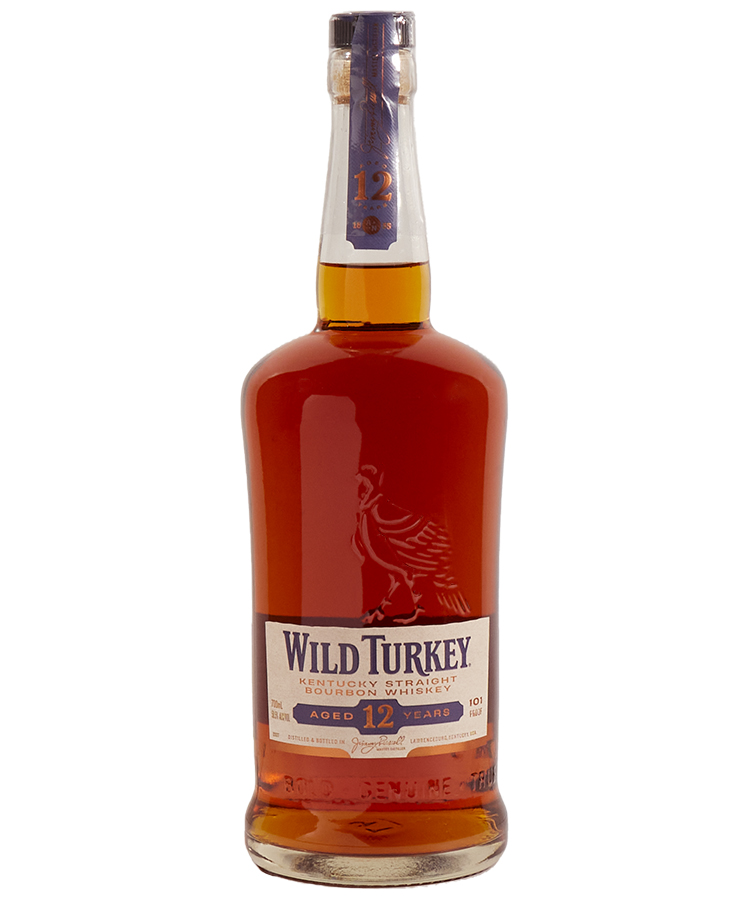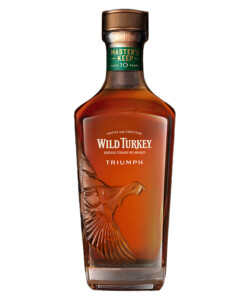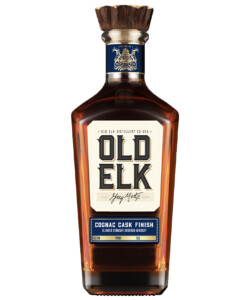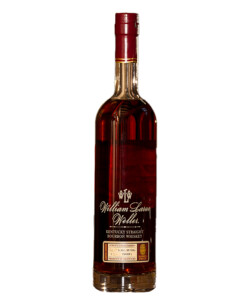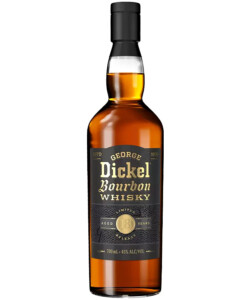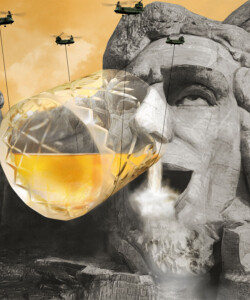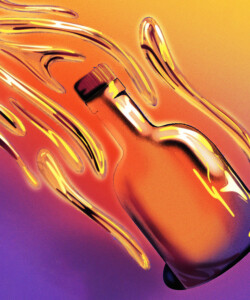Table Of Contents
The Details
| Rating | 95 |
| Style |
Bourbon American Whiskey Whiskey |
| Produced In |
Kentucky United States |
| ABV | 50.5% |
| Availability | Year Round |
| Price | $60.00 |
| Reviewed By | |
| Review Updated | 2023-08-15 |
Wild Turkey 12 Year Distiller's Reserve Review
Aged 12 years, bottled at 101 proof.
For bourbon aficionados, those stats have long marked the pinnacle — or at least close to it — for Wild Turkey. From the early 80s through the 90s, Wild Turkey produced a string of now-legendary releases with nicknames like Beyond Duplication, Cheesy Gold Foil, and Split Label. Despite frequent label and branding updates (which Wild Turkey still has a propensity for), those expressions all shared the same proof and minimum age statement, which became a sort of gold standard for the distillery's offerings. Many of those releases contained whiskey that was rumored to be much older, up to 20 years in some cases. Accordingly, today they command top dollar among vintage collectors.
Eventually, Turkey's 12-year, 101-proof offerings shifted to export-only. By the mid-2010s, they'd stopped entirely, replaced by other high-aged expressions released at lower proofs. In Fall 2022, Campari-owned Wild Turkey reintroduced the 12 year expression at 101 proof — but only in select foreign markets, where it's most commonly spotted in Japan and travel/duty free shops around Southeast Asia and Australia.
While its suggested price is around $60 USD, a number of specialty importers and bottle shops have made it available stateside at a significant markup. Americans who want it at retail will need to travel, or at the very least remind a globetrotting friend to keep an eye out "while you're over there…"
Can Wild Turkey's latest iteration of 12 year 101 reach those historic heights? Of course, Turkey's standard, non-age stated 101 proof release remains widely available, providing a ready barometer for comparison.
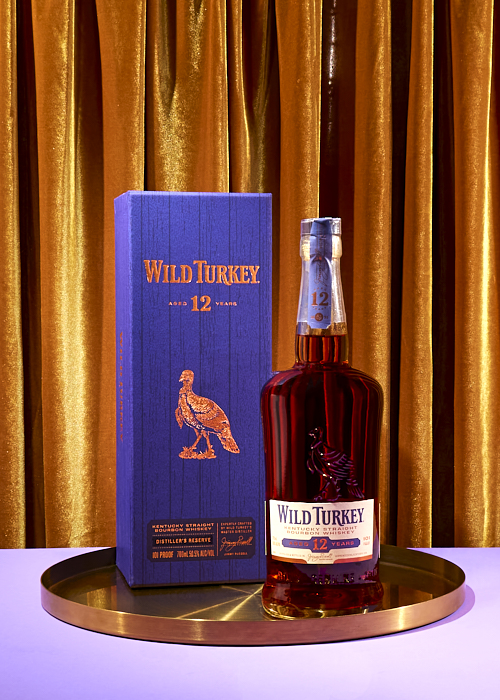
Wild Turkey 12 Year 101: Stats and Availability
Introduced in 2022, Wild Turkey 12 Year Distiller's Reserve 101 is bottled at (you guessed it!) 101 proof, with a suggested retail price of around $60 for a 700 milliliter bottle. Reportedly, it's made from a traditional Wild Turkey mash bill: 75 percent corn, 13 percent rye, and 12 percent malted barley.
Available in select Asia/Pacific markets, it replaces the export-only 13 Year Distiller's Reserve, which was bottled at 91 proof.
For American buyers, select importers and specialty bottle shops offer this whiskey for anywhere between $180 and $400 (estimated range).
Wild Turkey 12 Year 101: Tasting Notes
Nose
As with standard VinePair whiskey reviews, this was tasted in a Glencairn glass and rested for at least five minutes.
Though there are some traditional bourbon notes early on the nose — caramel, vanilla, and rich charred oak — what stands apart is cherry cough drop, which rides the line between sweet and medicinal. That's accompanied by layers of rich red fruit and berries. Rye spice and a pronounced corn aroma waft in at the very end of the nose, which balances the richly sweet, woody, and fruity characteristics.
Combined with the present (but not overpowering) sweet notes, the entire experience is reminiscent of a hot mixed berry cobbler. If anything, it noses just below proof, with ethanol present but not blunting any specific scent.
Additional time in the glass brings more herbaceousness, with a dulled grassy note. "Dulled" in this sense doesn't mean off-putting or faint; it simply lacks the sharpness one might associate with a freshly cut lawn, instead smelling a bit like morning dew. This is a nose rich with depth and complexity, a clear step (or two) above the standard Wild Turkey 101 in both realms.
Taste
The berry note comes through strong and early, with a rich vanilla sweetness carrying across the midpalate. Spiciness presents itself lightly, just at the tip of the tongue, akin to a gingersnap. Again, there's a heavy component of berry cobbler — this time with a scoop of French vanilla ice cream plopped right on top. Rye spice is present but fleeting, kissing the front of the tongue before sweeter notes melt across the mouth.
Fruitiness and oak-derived sweet notes — again, vanilla and caramel more than molasses or honey — come across almost simultaneously, which brings noteworthy balance. The whiskey doesn't veer into astringent territory with overpowering or lingering spice, which the standard 101 offering can fall victim to.
A drop or two of water brings out more citrus, drawing the flavors away from the heavy dose of berry when sipped neat.
At 101 proof, the mouthfeel is significant without feeling heavy, though I can imagine a more protracted experience at a few proof points higher. Wild Turkey is (understandably) wed to this proof point for this release. Those looking for a punchier sip at this age will have to turn to the heavily-allocated Russell's Reserve 13, or perhaps a future Master's Keep limited bottling.
Finish
Warming, lightly spiced, and lengthy, the sweetness slowly gives way to cinnamon and greater baking spice, specifically ground nutmeg. Compared to the regular Wild Turkey 101 release, there's a richer transition and tapering of flavors on the back end, with far less astringency. Flavor continues to sit and develop at the back of the palate, and subsequent sips bring additional nuance that can be tasted for minutes at a time.
It's not quite the jaw-dropper of yesteryear's 12-year, 101 offerings — and likely not the best among Wild Turkey's current releases — but there's plenty to appreciate, from the first smell all the way down.
It almost feels like sacrilege to say, but in the spirit of critique, I'd enjoy this more at a slightly higher proof. This is an uncommonly flavorful and balanced bourbon, and the proof point is perhaps more a nod to tradition than the ideal ABV for a particular whiskey.
Wild Turkey 12 Year 101 Rating
95/100
Recap
I should be clear: This expression is a far cry from the "dusty" 12-year, 101 whiskeys of decades past. It's an altogether different flavor profile from those bottlings, many of which rank among the finest American whiskeys produced last century. Comparison is truly apples to oranges, though it would certainly make for side-by-side tastings without real losers.
My main frustration with this expression is the likelihood there's even more flavor hiding in the gap between its current proof and cask strength. That's a comparatively minor irritation, more than balanced out by the joy that comes with a re-release paying worthy homage to its predecessors.
We can only hope it sticks around for a good long while.
As of 2024, VinePair no longer participates in any affiliate programs. All links included in our content are as a convenience to our readers, not for earning commission — we receive no monetary value from them. Learn more about our tastings & review department here!
